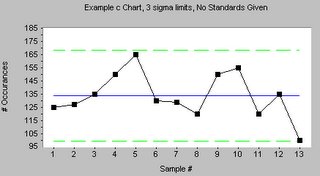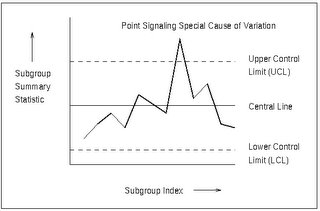What (We always know the What) should be included in every leaders business plan are objectives to improve team effectiveness form a CEO’s own team to the day-to-day workforce teams that drive the company’s overall efficiency. What is usually lacking is a method (How) or means of evaluating the effectiveness of the team’s efforts.
Company leaders must be the driving force behind organizations efforts to instruct its employees to use their own experience and knowledge to prevent and solve problems and improve quality. The Corporate Quality or Lean Six Sigma departments should not be the drivers of this type of action in a business plan.
What follows are some “How’s” that should be part of each leaders business plan for day-to-day efficiency and overall effectiveness of their operations.
Level of Empowerment - The ideal: A well led organization teaches its employees to use their own knowledge and experience to solve problems and improve effectiveness. It authorizes them, within guidelines (empowerment without parameters = CHAOS), to weigh evidence, reason systemically, solve problems, take action, and assess consequences. In this way it mobilizes the intelligence, energy, and commitment of all its employees, from the front line to top management. Follow what I call the 6Es for employee development – Envision - Enlighten - Enable - Empower - Execute -Encourage.
Customer Tools/Techniques - Has the team used appropriate quality analytical tools in reaching its objective? These may be “standard” tools identified by name, or tools of the team’s own devising. Can evidence be found that the team’s use of quality tools/techniques have been transferred to their day-to-day work operations?
Customer/Supplier-Driven Goals - What evidence does the team display that they know who their customers are, what the team’s customer requirement are, and that the team’s efforts are driven toward meeting those requirements? Likewise, the team should also identify who their suppliers are and do they have evidence that they have communicated their requirements to them? They should be skilled in “Systems Thinking” and SIPOC + CCCC concepts (See my posts relating to these topics - check label section).
Leadership - Is there proof that the team was actively supported in its efforts by senior management; or that the team, in its own efforts provided leadership for others?
Standardization/Replication - Is there evidence that shows the team’s improvement efforts have been standardized and replicated in the appropriate areas?
On-going Continual Improvement – Is there proof that result’s are not of a one time request, ad hoc, or isolated event, or is it part of their day-to-day efforts for continual improvement?
Meaningful Data - How meaningful (i.e.; customer) are the data used in measuring the magnitude of the improvement achieved in the day-to-day work efforts and towards the organization’s overall goals and objectives (They must be aligned). Do you have a means for managing this data and information in an improvement way (Process Measures) or is it all after the fact result measures
Organizational Impact - How important was the team’s achievement to the organization, taking into account both direct and indirect effects on cost of quality?
Developed by qualityg


